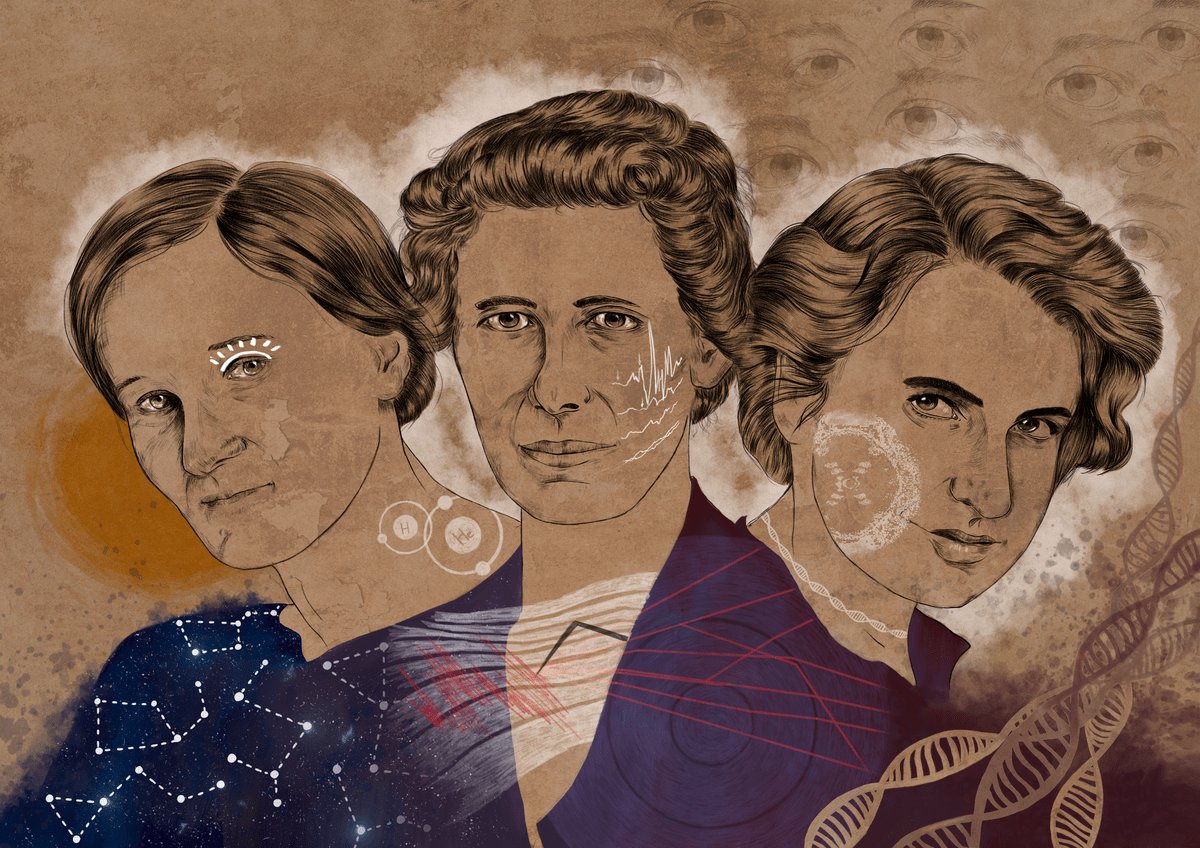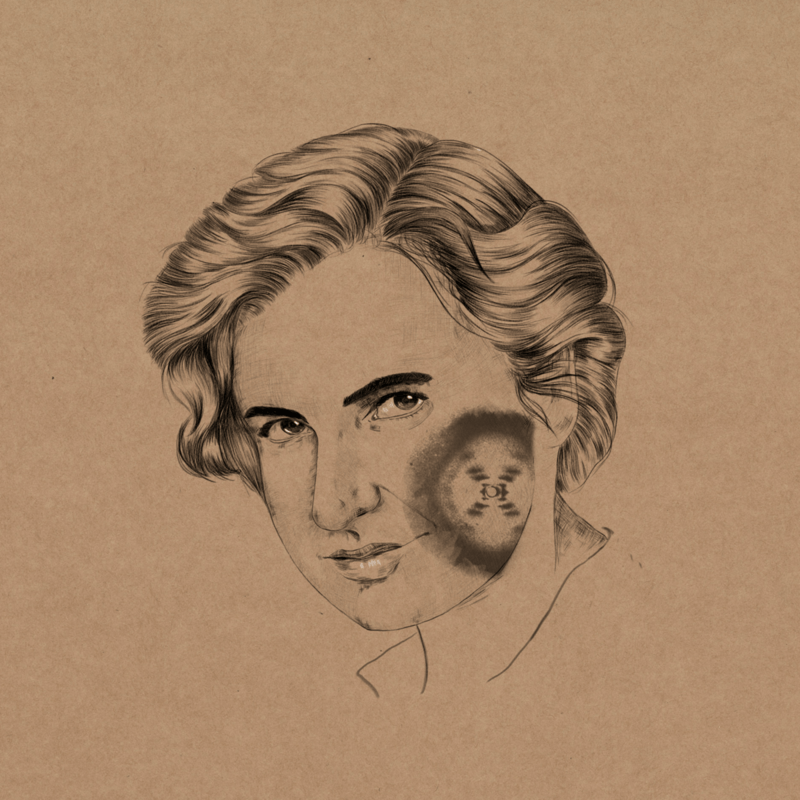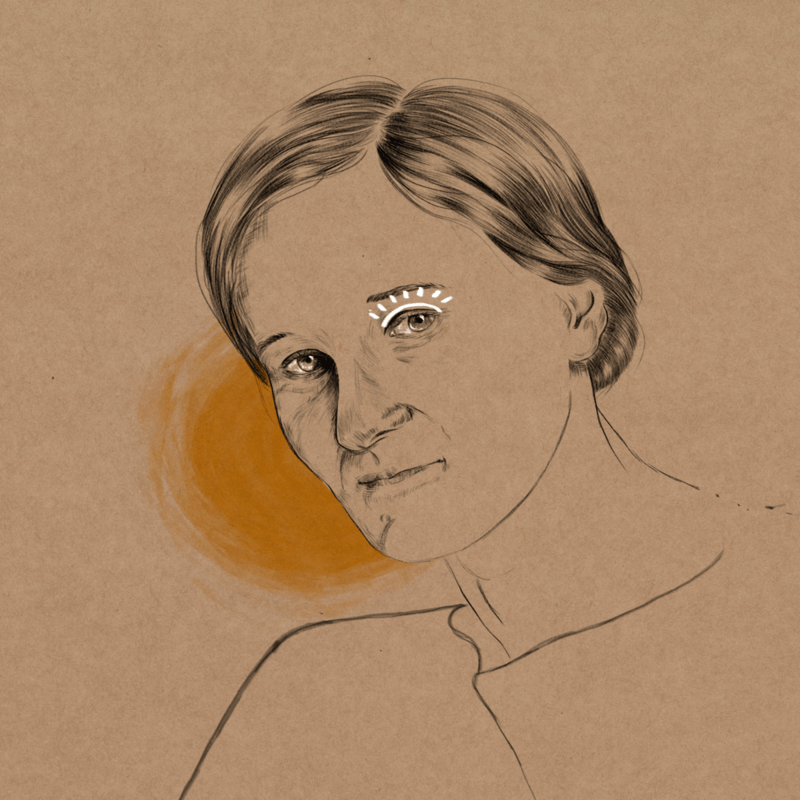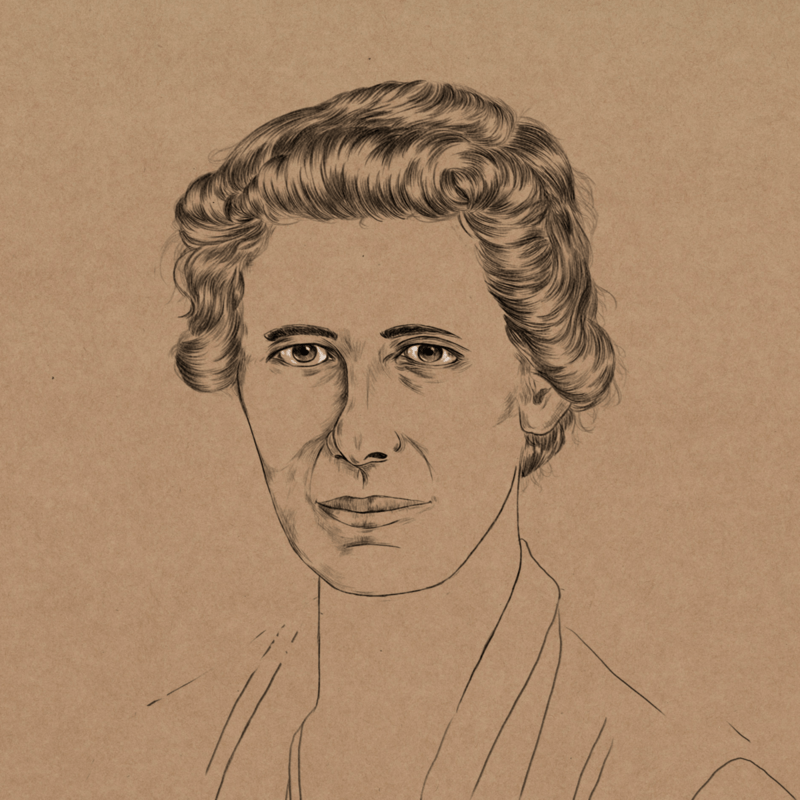- Home
- Projects

The invisible
- Tipo de proyecto: DisseminationType of project:
- Técnica: Digital matricial
The invisible Everything we cannot see is invisible to our eyes. The hidden side of the moon was invisible until it was photographed in 1959. Sometimes, invisibility is not something inherent to the objects, people, or stars around us. We make them invisible by not wanting to look, by not wanting to see. Women in science have been and continue to be invisible and invisibilized. Except on March 8. On that day, it seems that some manage to gain the power to be visible, only to hide again for the remaining 364 days. But like the dark side of the moon, women in science are there, and they will remain there until we make them visible.
Here, visibly illustrated before your eyes, are three real women and scientists who in turn made visible what was previously invisible to the world (from left to right):
- Cecilia Payne-Gaposchkin, an astronomer who discovered that stars are composed mainly of hydrogen and helium.
- Inge Lehmann, a seismologist who discovered a seismic discontinuity, proving that there was a boundary between what is now known as the liquid core and the solid inner core of the Earth.
- Rosalind Franklin, who used X-ray diffraction to obtain the image of DNA that made it possible to identify its structure.



The idea
The project seeks to highlight the impact and contributions of women scientists by showcasing the work of three of them, highlighting their achievements and legacy. The idea behind the illustration was not only to highlight the names of women scientists, but also to portray them, give them a face, and make them visible. In addition, the aim was to show what they were able to make visible and share with the world thanks to their research.
The result
An illustration was created combining portraits of three female scientists with visual elements representing their discoveries and areas of work. Cecilia Payne is shown surrounded by stars, Inge Lehman is shown displaying her discovery, and Rosalind is shown with the image of DNA she obtained through X-ray diffraction drawn on her cheek.
*This illustration won the 2022 Jot Down Science Contest in the illustration category and was later published in Jot Down Kids magazine.

